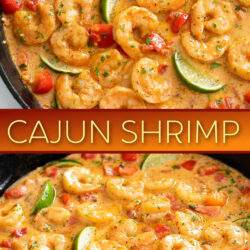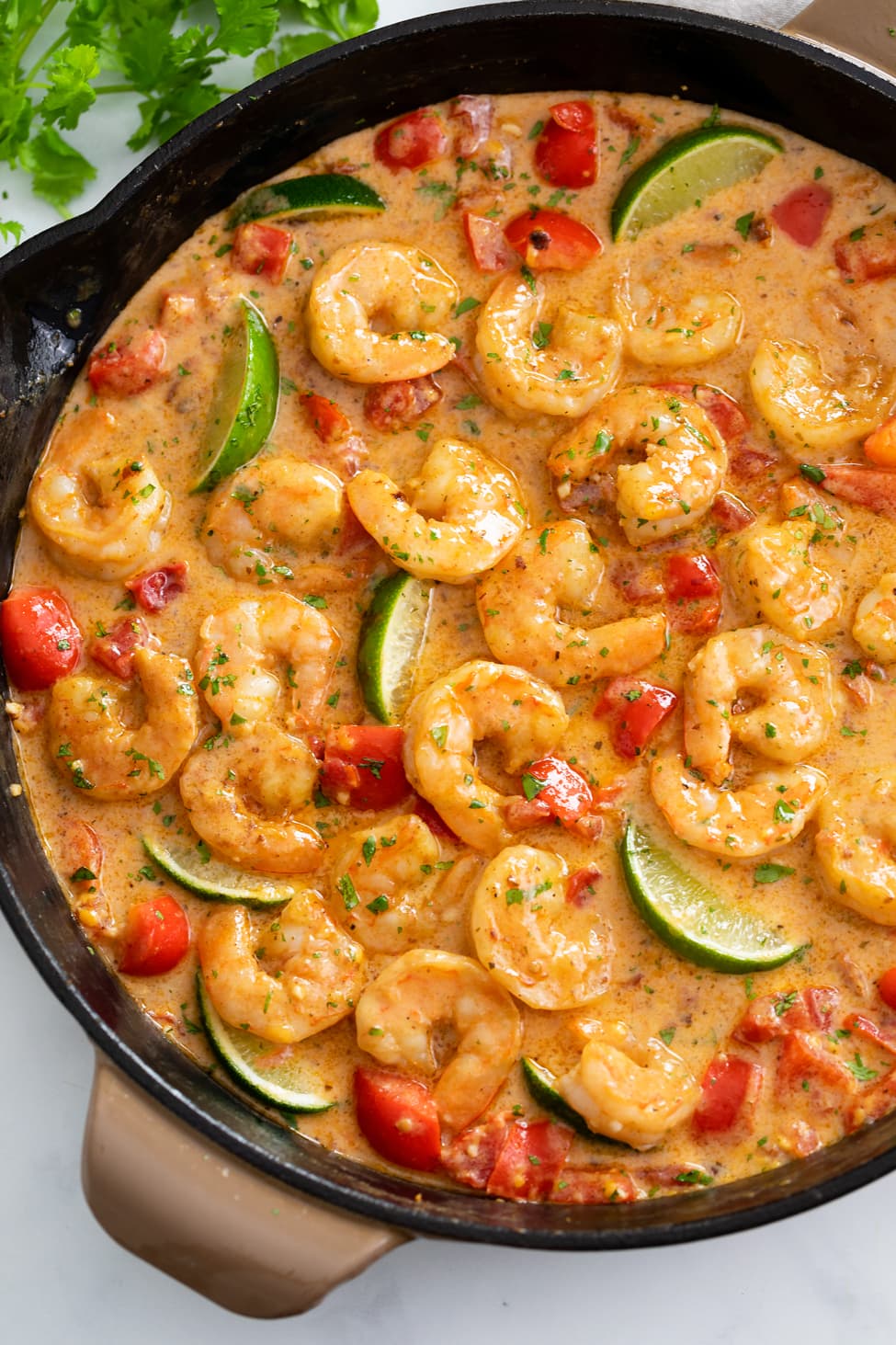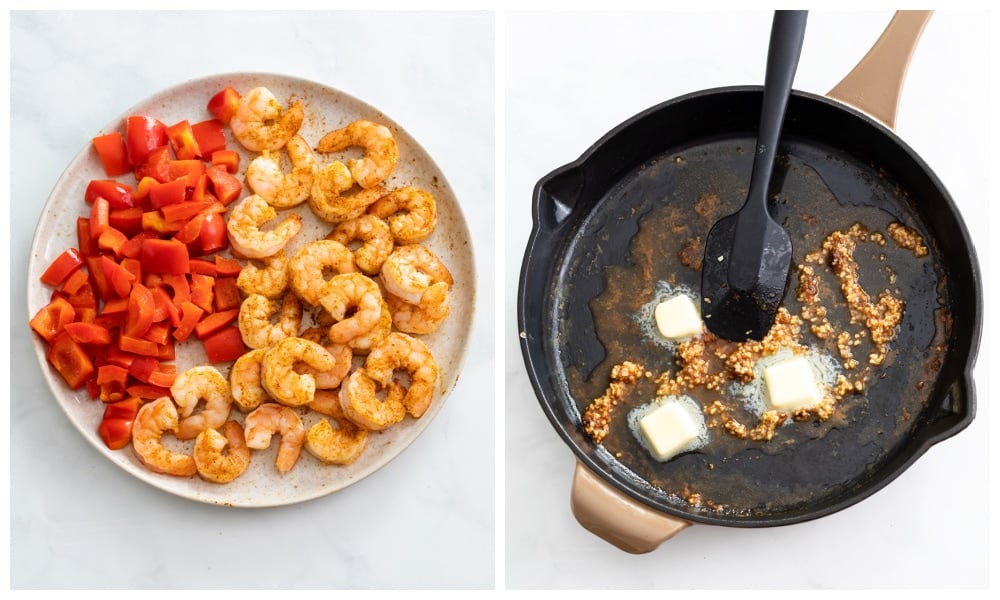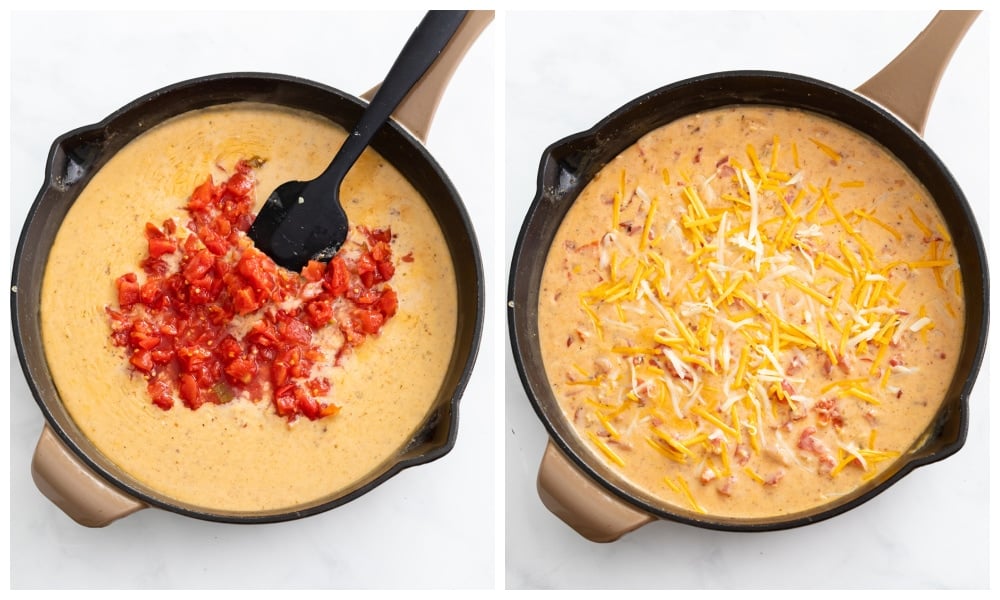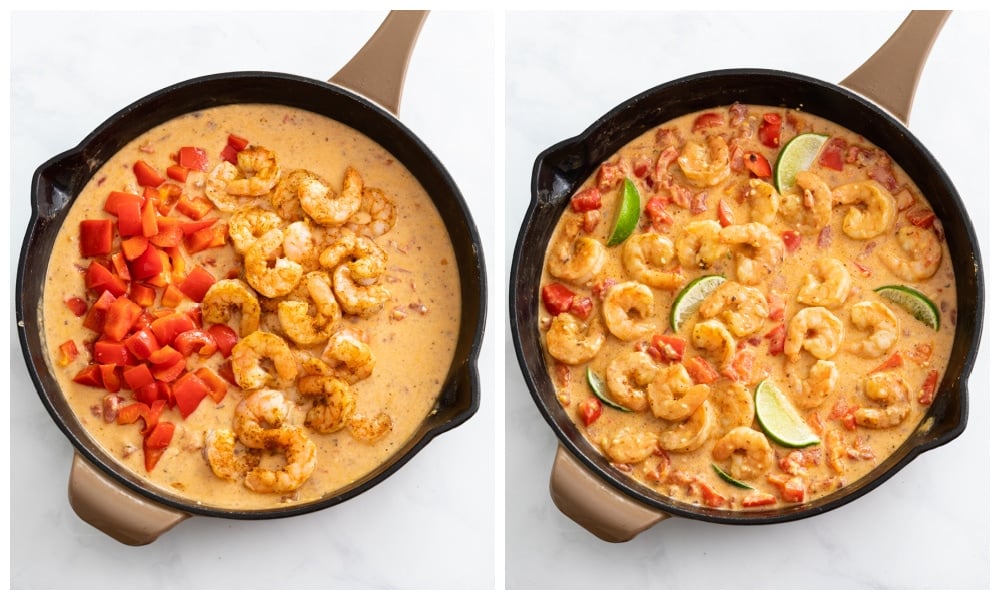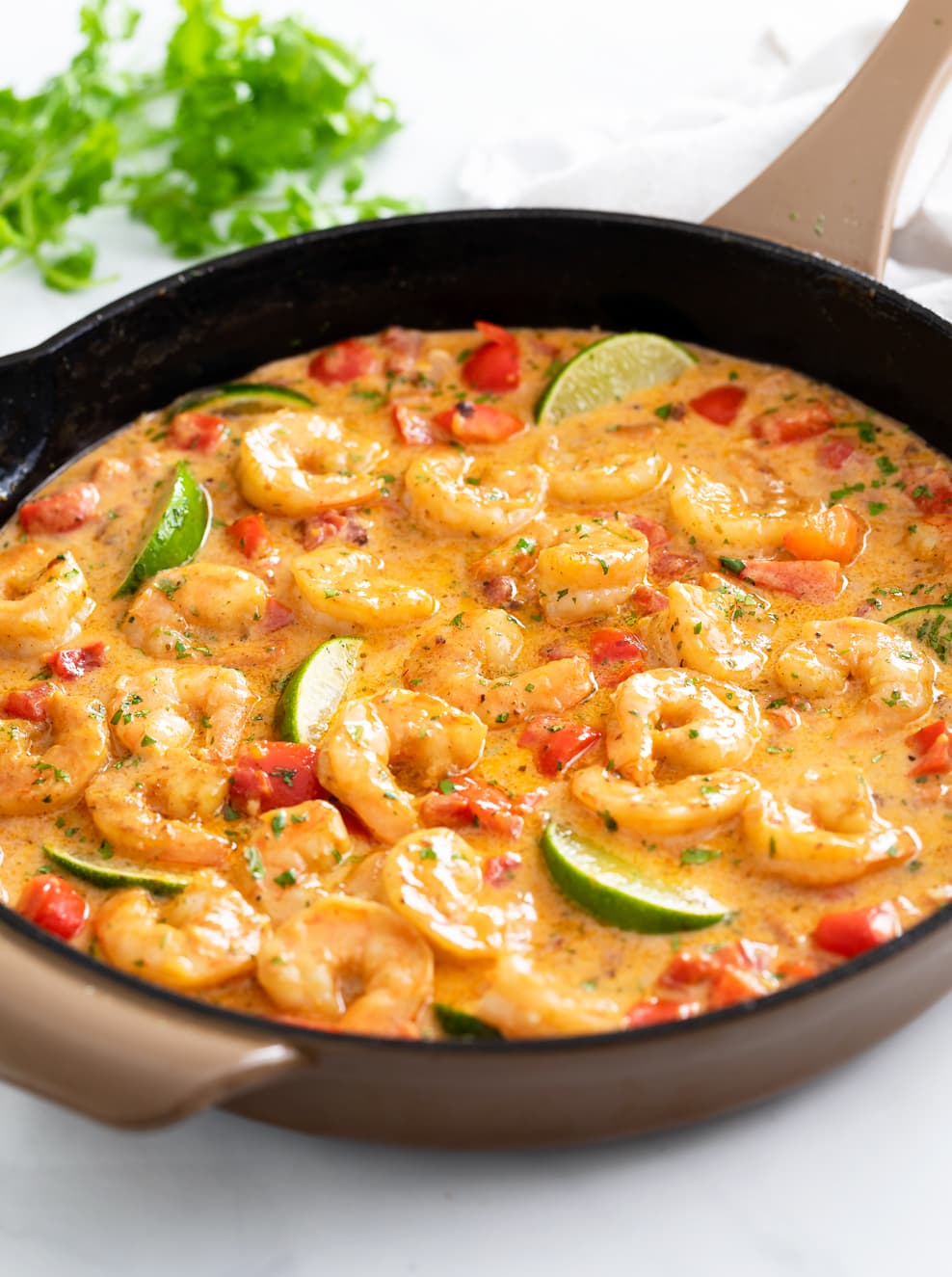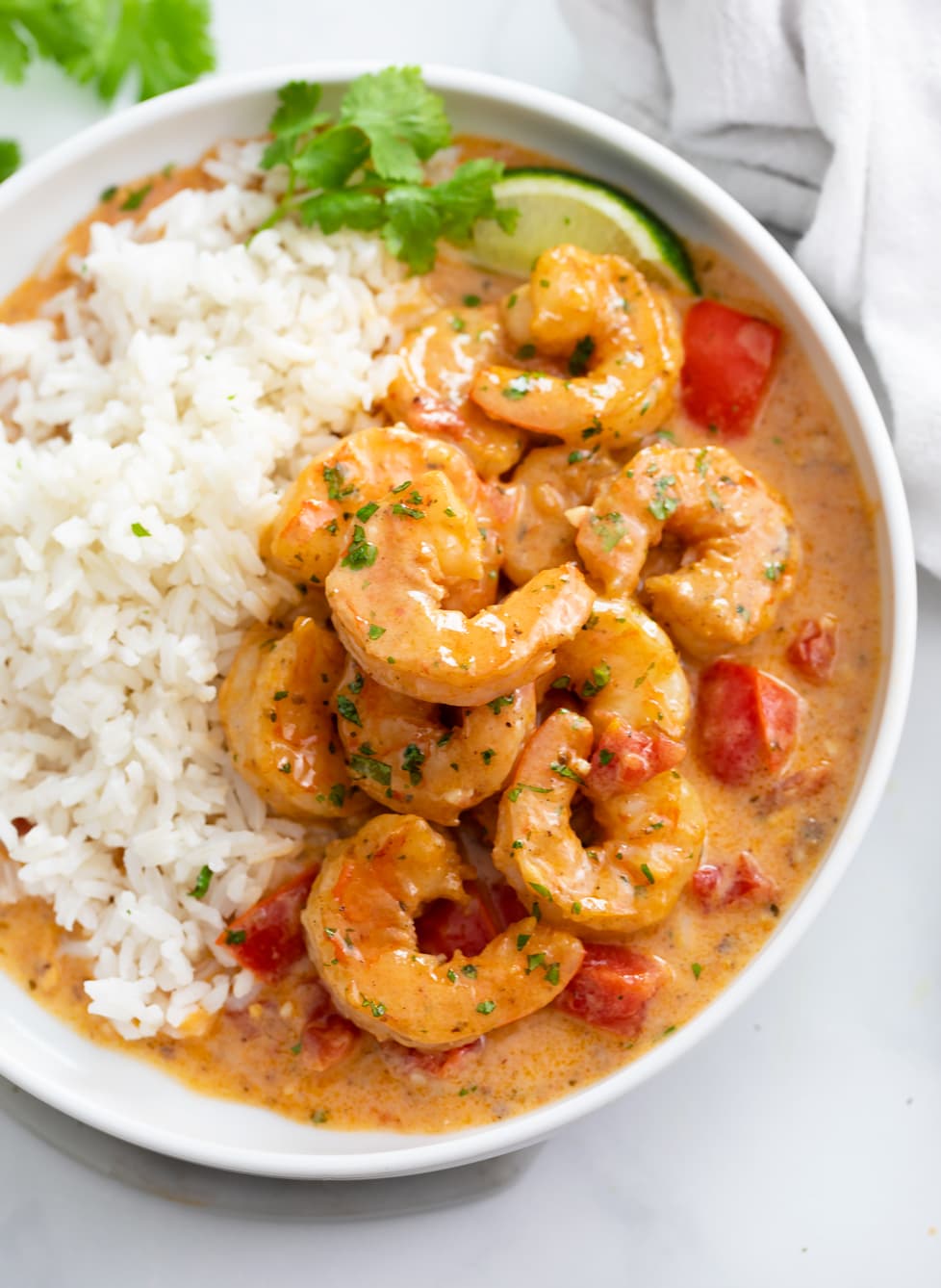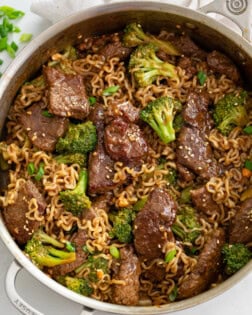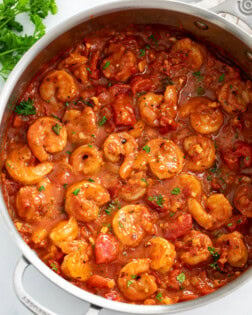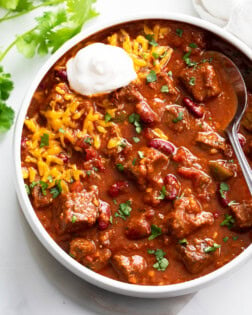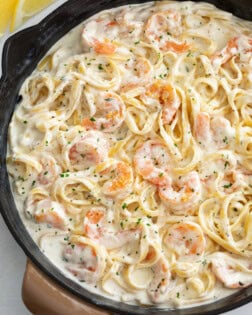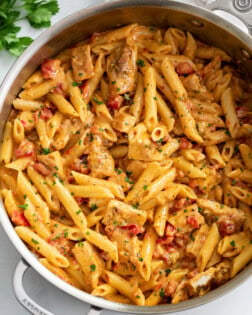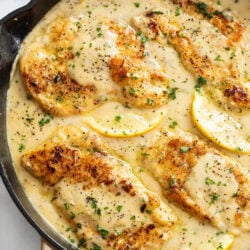Cajun Shrimp
This Cajun Shrimp recipe is going to forever change your typical dinner rotation! Just wait until you taste this incredible sauce, you’re going to want to drink it! (And I grant you permission to do so. 😁) This recipe is so versatile- there are a ton of add-on options, including black beans, corn, diced avocado, and more. There is also plenty of sauce to serve with some pasta (my buttered noodles are a great choice), or with some rice and beans! Be sure to check out my pro tips below as well as my tips for cooking with shrimp– you’ll be glad you did!
How to Make It
See recipe card below this post for ingredient quantities and full instructions. Season the shrimp with Cajun seasoning and sauté in olive oil with red bell peppers. Set aside. Deglaze the skillet with juice from diced tomatoes. Add butter and garlic and cook for 1 minute.
Stir in the flour and cook for 1-2 minutes. Add chicken broth mixture (chicken broth, heavy cream, honey, hot sauce, and seasonings) in small splashes, stirring continuously.
Bring to a boil, reduce to a simmer, add diced tomatoes. Simmer/reduce for 10 minutes. Stir in the cheese over low heat.
Add the cooked shrimp and bell peppers. Stir to combine. Garnish with lime wedges and cilantro. Serve with rice, buttered noodles, black beans, or salad!
Tips for Cooking With Shrimp
Size: The size I use is large, and is labeled as 26/30 per pound. (This means that it takes between 26-30 shrimp to equal a pound.) You can use fresh or frozen. If using frozen shrimp: Run them under cool water until completely thawed, then pat them dry. You may also need to remove the shells/veins. Shrimp can go from cooked to overcooked very quickly, consider setting a timer to avoid overcooking. One way to mitigate this is to peel them after you sauté them, the shell helps protect them from cooking too quickly. Shrimp curled into a “c” =cooked. A shrimp curled into an “o” = overcooked.
Storage
Store in an airtight container and refrigerate for up to 3 days or freeze for up to 3 months. Cooked/leftover shrimp can be frozen and reheated for future meals, and sauce does reheat well. To reheat: Let it thaw completely and reheat in a skillet on the stovetop over medium heat until just heated through. Overcooked shrimp becomes rubbery, so try to avoid that. You can also reheat this in a makeshift double boiler on the stovetop, it applies a nice, even heat without being too direct or harsh.
Try These Next
Tried This Recipe?
Leave a review, I love hearing your feedback! ⭐⭐⭐⭐⭐
Large Skillet– Same size as the skillet pictured in this recipe. Kitchen Tongs– Easy way to handle the shrimp in the skillet. Garlic Twister– Fresh garlic in this recipe is a must if at all possible. Measuring Spoons– I have these magnetic ones which stay nice and organized in my utensil drawer. Pinch Bowls– for measuring out seasonings ahead of time.
